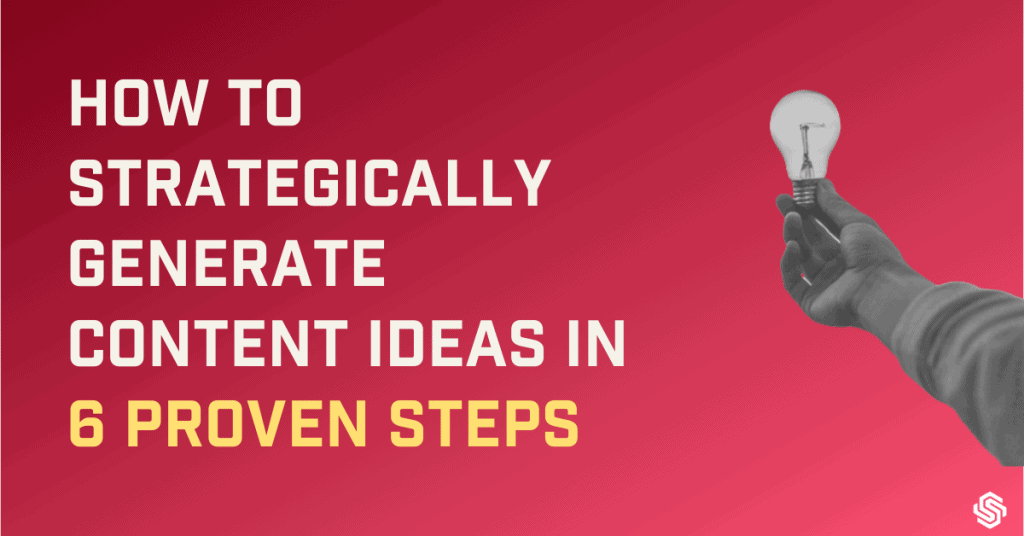Have you ever written super long articles? I am talking about 2000-2500 worded or longer articles.
If yes, how was your experience writing them and how has your audience responded to them?
And if not, then you should start!
You might be thinking that today’s audience does not have the time or patience to read long-form, that they prefer short snackable content. Reels are in vogue now!
No offense, but you are wrong if you think that!
There will always be people looking to learn and gain information and are willing to invest their time into it. And there may not be millions of them, but these are the people who will be your loyal followers, and who knows, maybe your future customers!
Would you rather have a million followers who ‘like and scroll on’ or 1000 loyal followers who are your potential customers?
I am guessing you would want the latter.
You should be writing pillar content to give valuable and extensive information to your audience. Your article is going to be a one-stop solution to multiple user queries. Let’s understand the concept better.
Key takeaways for you
| A pillar content is a informative piece of content on a specific topic or theme covering every aspect of content so to attract more organic visitors. |
| You should write pillar content so to answer every question your target audience is searching for in the search engines. |
| Here are the steps for writing a pillar content – 1/ Select a topic and create a unique headline for your content. 2/ Do keyword research and collect talking points and subheadings. 3/ Describe your topic in-depth. 4/ Add FAQs. |
What is pillar content?

A content pillar is a concept for SEO where you use in-depth content to attract users to your blog from search engines. If I have to simply put it, a pillar article is a blog post that provides a complete answer to any question a user may be searching for on a given topic.
Moz Founder Rand Fishkin called it 10X content, which signifies that it is ten times better than the top result. It is written on a core topic that branches out into various sub-topics, threaded together under the same umbrella. Think of it as a parent page that talks about the main topic, and each sub-topic is a potential topic for a blog on its own.
A lot of topics are dependent on trends and are short-lived. But pillar content is usually written on some evergreen subject and is always relevant and is never going to change. People would always need that information and will look for it time and again. So the efforts you make in creating the pillar article are worth the while.
You dive deep into a particular topic with not just one keyword but many related keywords forming a cluster of topics thus ranking for all those search terms. Any related word will bring your blog to the search results and attract more readers.
Why should you be writing pillar content?
Search behavior is changing.
People are getting more conversational and extremely specific in their searches. It is hardly practical to write blogs on each of these particular queries individually. So what you do is, huddle all these queries together to create one robust article answering all the queries. It has a lot of benefits apart from being an SEO strategy.
Do you know why?
- You are writing quality content that provides value and gives your audience a deeper understanding of a topic.
- You can provide links to related articles on your blog with detailed information.
- It increases the time spent by your audience on your website.
- You are building the trust and loyalty of your audience.
- You are writing broadly on an evergreen topic that will always be relevant.
- The use of multiple keywords around a particular topic and the structured framework help search engines crawl through your page and also help you rank in the search results.
- It is easy to repurpose such content into an ebook or break it into smaller chunks to post as individual blogs, social media posts, email sequences, infographics, slide decks, etc.
“Better content is outweighing more content,” said Rand Fishkin. Many believe that creating more content will propel more traffic to your website. However, most often quality is compromised.
If you focus on quality, depth, and structuring, you will easily earn a valuable audience.
For long-form content to be appealing to your audience, it needs to be structured right with logical information hierarchy. You need a framework.
How to write a pillar article? – The Framework

There is nothing more satisfying to the brain than systematically patterned content. And the larger the content is going to be, more efforts you need to put in to make it appealing to keep your audience interested. You need to organize the content and simplify it as much as possible without compromising on the information you are giving out.
Start with deciding on a topic from your sector which is broad and evergreen. Make the necessary keyword research to collect all related queries. Refer to g, The Lazy Man’s Guide to (Advanced) Keyword Research, for a deeper understanding of keyword research.
Read my post, The most definitive Ahrefs Review, to under how to use the tool.
All this helps you understand what your audience is looking for and you can make a sketch of how you are going to put the content together to cater to their needs.
The format could be something as follows:
1. The Headline:
I like to think of a headline as a window to your content. When a reader looks at the headline, he gets a peek into what your content will be all about! So make sure you give a good view, for your headline has the power to make or break your content. If the picture isn’t attractive, the viewer will not enter!
I suggest to you use the Portent Headline Generator. Type in the keyword and look for ideas. Let me give you a heads-up; some of them will be ridiculous. But you know better, don’t you?
Look for something relevant to what you are writing and use the suggestions to create unique headlines of your own!
As long as your headline-
- makes sense,
- is grammatically correct, and
- the tone of your headline matches your content,
You are good to go!
2. The Introduction
Once you have lured in your reader with that beautiful view of a headline, you have 5 seconds to convince them to stay with your content. How would you do that?
You can achieve this by using the Attention-Reason-Benefit (ARB) Formula:
- You can narrate an anecdote (personal ones work too), state an astonishing statistic, or a thought-provoking analogy to retain their ATTENTION.
- Give them the REASON why you are writing the article.
- Tell them how they are going to BENEFIT from your article.
You have the added advantage of attention when you write it conversationally. Do not address the masses. Write as if you are writing it for one person, the one reader. When you talk to your audience one-on-one, they are more receptive and attentive to what you have to say.
3. Describe the broad topic
This is the main topic which is the core of the pillar and it bifurcates into various sub topics related to the same concept diving deeper into the subject.
- Write the information in a systematic way with subtopic 1, subtopic 2, subtopic 3 and so on.
- Explain each subtopic by answering the what, why, how, where, who, when and which, not necessarily all of them but according to their relevance to the concerned subtopic.
- The subtopics could be individual blog posts on their own and you can link out to them for further information.
- Link back from those blogs to the main pillar blog.
- Make use of relevant media to make the content visually appealing.
For example, consider the topic of Hypertension. What are the possible things that you can write about hypertension?
- What is hypertension?
- What are the causes of hypertension?
- What are its symptoms?
- How can it be treated?
- How can it be prevented?
- What are its remedies in Ayurveda?
- What are the exercises you can do to prevent hypertension?
- What lifestyle practices can you adopt to prevent hypertension?
These are some of the questions I can think of. Go ahead and do keyword research and see what people are asking about this topic,and answer these queries in your content. Each bullet point can be an individual blog post you can link out to
4. Add FAQs
This is added bonus for your audience. You are answering arbitrary queries that people may have with respect to the core topic.
How do you know what these queries are?
Search your keywords in Google results and look at the People also Ask section.
If you click on each question to add more questions that drop down in the list. You can address these questions specifically.
Use social media platforms like FB groups and Quora, where people talk more openly and freely. You will also know of any misunderstandings and misconceptions readers may have about the topic.
- Conclusion
Finish it with a neat conclusion by summarizing the article and a call to action if necessary.
Examples from my Website
To Conclude
And that, my dear reader, is how you write a pillar article.
No doubt creating it is going to take a lot of time, research, planning and efforts on your part. But I suppose you already realise that it is important enough to invest that amount of energy in it.
Do you have any questions? I would be happy to answer if you leave them in the comments.


